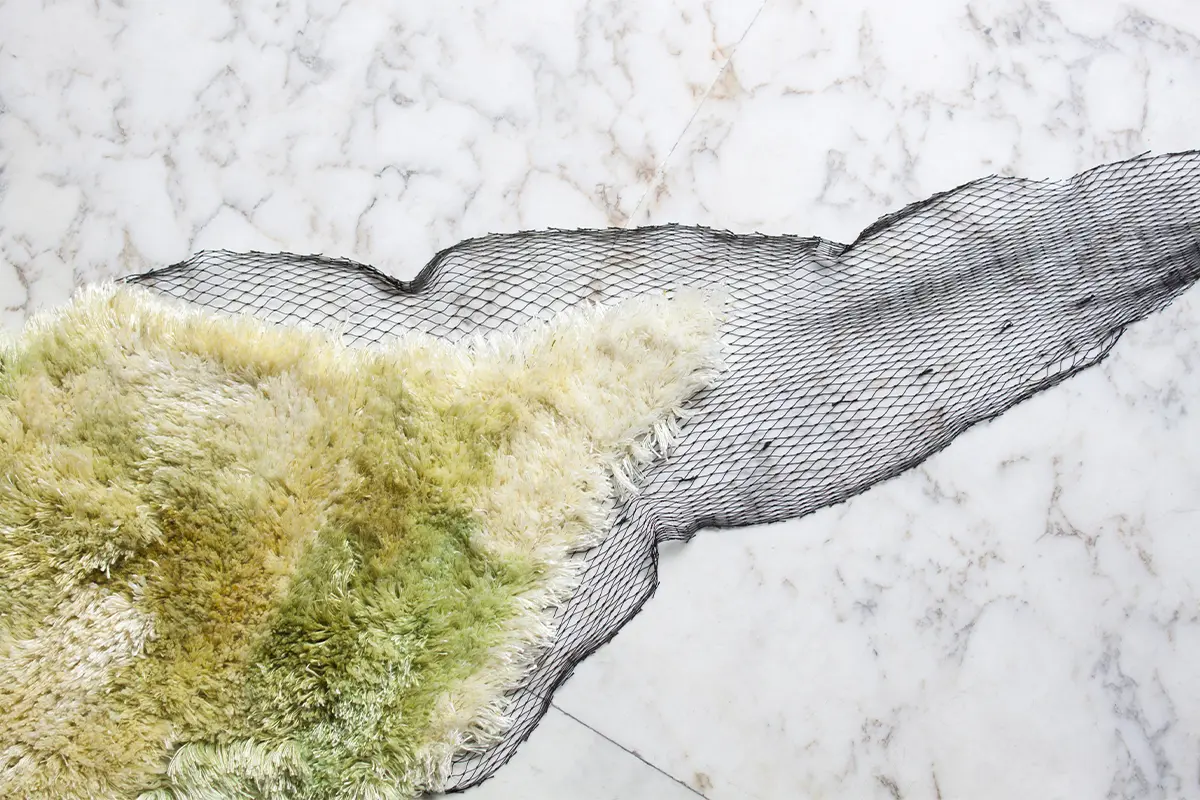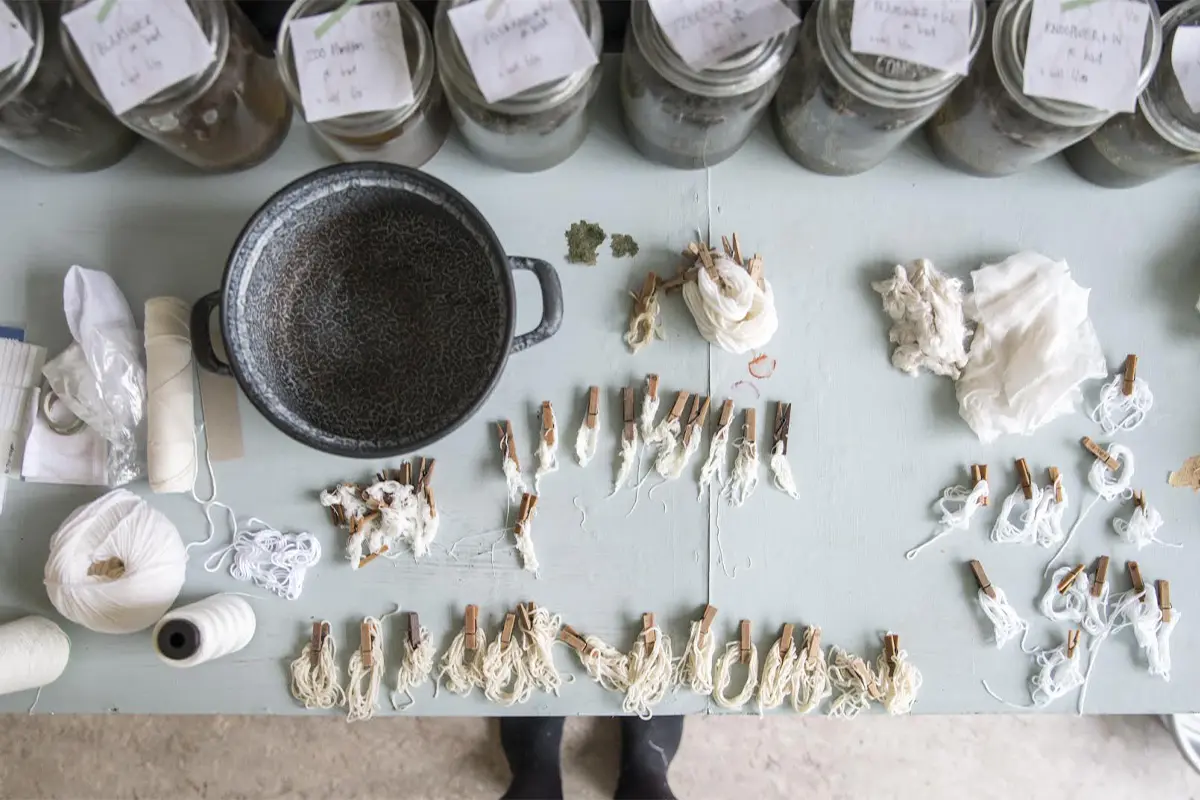An interview with Nienke Hoogvliet, conceptual designer from the Netherlands: she works with new materials with the aim to raise awareness on marine pollution
Relying on other sources for the leather supply: fish skin
The production of fish skin leather was once common in fishing communities; now artisans and designers are bringing this tradition back as a more sustainable practice.
Fish leather has always been used and history is full of examples. In the Sixteenth century it was used by men to cover their weapons and the blades of their knives. Later, in the Eighteenth century, it was very popular as decorative coating material. During the Art Deco period it was used for handbags, cigarette boxes and furniture.
The practice of making fish leather faded due to colonialism
Before the rise of manufactured fabrics, Indigenous peoples from coastal and riverine regions around the world tanned or dried fish skins and sewed them into clothing. Since the material is very strong and water-resistant, it was perceived as essential to survive. In Japan, the Ainu crafted salmon skin into boots. Along the Amur River in northeastern China and Siberia, the Hezhen and Nivkh peoples turned the material into coats and thread.
In northern Canada, the Inuit made clothing, and in Alaska, several peoples including the Alutiiq, Athabascan, and Yup’ik used fish skins to decorate boots, containers, and parkas. The practice of making fish skin leather faded in the 20th century since it intertwined with colonialism and assimilation.
Today’s commitment to develop the emerging fish skin industry
Fish skin is a byproduct of the food industry that often goes to waste. Every ton of fileted fish amounts to about 40 kilograms of skins, which are often ground into animal feed or fertilizer, tossed into landfills, or thrown back into the sea. Globally, humans consume the filets of around 150 million tons of fish yearly. That’s equivalent to about six million tons of skins.
Several sustainability-minded initiatives and institutions are now pushing to develop the emerging fish skin industry. Under FishSkin, a research project financed by the European Union, fashion designers, scientists, museum curators, and craftspeople are meeting for training and networking events to discover ways of introducing fish skin leather and increasing the material’s use in the fashion industry.
Similarly, the Food and Agriculture Organization of the United Nations is promoting fish skin leather in its Blue Growth initiative, a program aimed at supporting sustainable and efficient uses of ocean resources.
Lampoon interviewing Studio Nienke Hoogvliet
Studio Nienke Hoogvliet is a conceptual design studio from the Netherlands with a focus on new materials, with the aim to raise awareness on the pollution of the oceans. Based in The Hague, Hoogvliet founded the studio in 2013, and has since been joined by Tim Jongerius. They engage in freelance as well as self-initiated research and design projects that raise awareness on social and environmental problems in the textile, leather and food industry.
«It was never our goal to use waste – we try to take all aspects around a production process into consideration. That often leads to the realization that somewhere in the process, valuable material is not being used. To close that circle, it makes sense to use that material».
Her research for sustainable materials within the marine environment started with the project SEA ME, where she explored the possibilities of seaweed: the result consisted in a soft yarn made entirely of seaweed, a color palette of natural textile dyes, and the making of bioplastic.
Studio Nienke Hoogvliet: The RE-SEA ME project
During the Milan Design Week Studio Nienke Hoogvliet presented ‘RE-SEA ME’, the continuation of ‘SEA ME’. She continued her search for materials out of the sea and discovered that fish skins are a waste product of the fishing industry that could eventually be used to craft leather.
For this project Hoogvliet used salmon skins: she went to fish shops to collect their waste and discovered a way of tanning the skins without any chemicals. By using an old technique that requires a lot of manual labor, she created a strong, sustainable material that can be used like regular cow leather. To show the abilities of the leather, Hoogvliet designed a small stool with fish leather seating, and a conceptual rug where fish leather is sewn into a discarded fishing net.
Working with fish skin: qualities and craftsmanship
In order to master the technique of tanning fish skin, Hoogvliet attended a workshop given by a man specialized in traditional craftsmanship, where everything is done by hand.
Fish skin is stronger than other skin material, because the connective tissue goes crosswise, she explained. Every fish skin can be tanned, but the one she likes the most is salmon, because of his nice gradation of colors. Salmon is ideal for gluing onto items such as cuffs.
Fish leather is as suitable as regular cow leather; just the skins are smaller in volume than the leather crafted from larger animals or mammals. An advantage of fish leather over traditional fabrics is that it does not ravel, meaning that edges do not require stitching after being cut.
The process of making fish leather
In the book ‘Fish leather’, the process of tanning fish skins is described step by step. At first Hoogvliet goes to the fish auction and fish shops to collect the fish skins. Then, the inside of the skin is scraped clean from the meat with a precision knife, a Stanley knife or a rotary cutter, to get rid of the scales on the outside. This process requires scraping against the growth direction of the scales, then it gets rinsed.
Since the skin is stiff by its nature, it gets soaked, placed in a bowl with a mixture of oils and eggs, for about 24 hours. This way, the skin will get softer and resistant. After soaking, the skin is again rinsed and wrung out. It has to be massaged very firmly. To make the skin waterproof it is smoked to protect it from bacteria growth on the surface.
Sometimes the smoke also changes the color of the skin. After that step, the skin is ready to make a product out of it. The most labor-intensive part of the whole production process is smoothing the skin. «The process could be scaled up, but it could happen only if there was a machine that could do that».
The use of fish leather in the industry so far
Commercial interest in fish skin leather is partly a result of consumers’ environmental and ethical concerns about the global leather supply chain. In recent years, snakeskin and alligator skin have come under scrutiny. In 2018, Chanel discontinued its use of reptile leathers after animal rights activists raised concerns about the inhumane treatment of reptiles raised or hunted for their skins.
The modern tanning industry is also known to be notoriously hard on the environment and local communities. Most conventional leather is produced using harsh chemicals, such as chromium salts, which cause respiratory ailments and persistent skin ulcers in tannery workers. Tanneries also often dump their waste into local water systems, where it contaminates drinking water and kills aquatic life.
Studio Nienke Hoogvliet – Future projects
Hoogvliet hopes to inspire the industry. «I hope to work with fashion designers, who will use my materials for their designs. I also have plans for more interior products». Fish leather is not cheap if you compare it with cow leather, but if compared to exotic leathers, like snakeskin, it is inexpensive.
Hoogvliet is currently collaborating with the Dutch Water Authorities, to work with materials reclaimed or created from the waste streams, in particular toilet paper and bioplastic made from the bacteria that clean the wastewater. «It’s key to show that even such strange or dirty materials can have so much value. If people realized and accepted this, the change to recycling more materials would be easier to make».
Studio Nienke Hoogvliet
Design studio for material research, experimental and conceptual design based in The Hague, Netherlands. The focus on new materials, such as fish skin, with the aim to raise awareness on marine pollution.




















